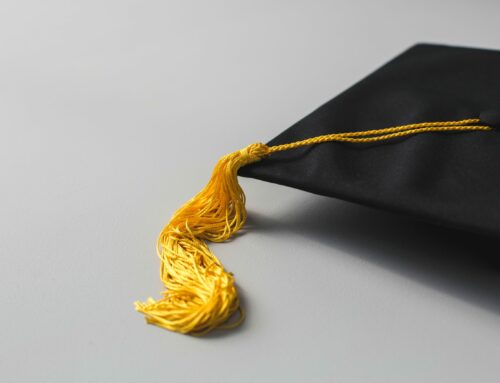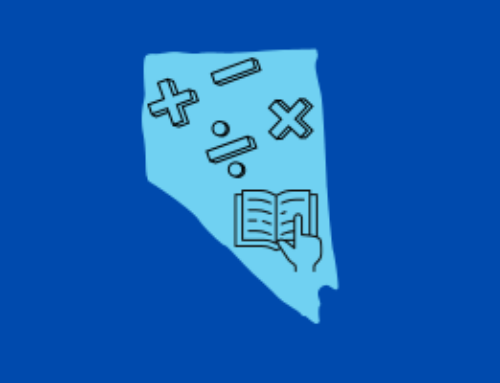To give voters more information on the perspectives of State Board of Education, Clark County School District, and Washoe County School District Board candidates, Opportunity 180 introduced the Question of the Week to accompany its Primary Election Voter Guide. Each week, candidates will have the option to respond to a question emailed to all candidates for whom we have contact information. Participation is voluntary, and responses are published as is. Below are the responses from candidates to this week’s question.
This week’s question is: If elected, how would you ensure that students today are prepared to compete in tomorrow’s technology-rich economy?
State Board of Education – District 1
Tim Underwood
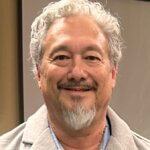
A: Today, Nevada’s public education is in obvious need of reform. With Nevada being nearly last in the nation in education quality and outcomes, a fundamental transformation is necessary.
I will fight for the students and families of Nevada to change the public education system from its current failed state into a thriving system founded upon excellence and merit. The current policies of mediocrity and placating federal and other foreign powers instead of addressing the needs of Nevada school families in the great State of Nevada must end.
If Nevada chooses hope and change instead of our current status quo of warm mayonnaise mediocrity and apathy, we can achieve educational excellence and place our great state in the top half of the nation’s states in education quality and outcomes in just a couple of years.
But to do so, we must be brave and willing to think outside of the bureaucratic box that got us into the terrible position Nevada public education is in today. We must be willing to tell the tiresome “experts” to leave us alone.
Local Nevadans, not egghead bureaucrats, superintendents from distant states, or overly ambitious politicians will know how to deconstruct the erroneous policies and their errant philosophical foundations that harm our schoolchildren today.
The people of this great state will rebuild an educational system that addresses the needs of the student and his family. No more bending the knee to Washington DC or to the other radicalized extremists or corporate fascists who have their grip on the school districts of Nevada.
In unity, the people of Nevada will bring excellence and high scholastic achievement back to our school children, something which they richly deserve. Join me in the struggle to liberate NV public education from the chains that bind us, so we can form a functioning, thriving public school system.
Whether our students need to excel in a technology-rich future or one where technology has perhaps taken a backseat, an education free from planned mediocrity and indoctrination will best equip them to excel and meet any upcoming challenge.
State Board of Education – District 2
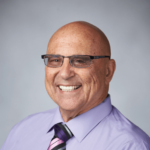 Dr. Paul Davis
Dr. Paul Davis
A: I do not believe that any politician can guarantee anything. All we can do is persuade those in the decision-making process of the critical need to prepare our students for a far more advanced technological society in the immediate future. In education, it is paramount that students are taught the value of problem-solving and critical thinking for employment in a highly technological economy. Public schools should emphasize what colleges focus on in robotics, math, and sciences. Schools should be able to purchase the most current technological advancements in computers, software, and high-speed internet for all students to utilize and train in. This also means that teachers must be involved in professional development programs to teach the latest updates in the field of technology and convey the importance of students succeeding and thriving in our evolving technological society.
Clark County School District – District A

Emily Stevens
A: This is a tough question. Technology is moving at an incredibly fast rate and most organizations (let alone – schools) are struggling to keep up. If elected, I would turn to the professionals. The school district should be working much closer with its community and business partners to create programs that will keep our education competitive with the fast-moving technology that we see each day. AI has become a technology that many of our students are learning to use to write reports faster instead of using critical thinking, like our curriculums called for in the past. We have to figure out how to use these technologies to advance our student’s learning experience and instigate critical thinking once more. We also need to advance current STEM programs to include AI development and programming. I believe that the school district has a partnership with Tesla to provide apprenticeships for students upon graduation. Partnerships like these are incredibly beneficial but we’ve got to do more in the classroom. This will always be an ongoing process as technology continues to advance, but we must work closely with the experts in the community to ensure we’re moving along with it and creating more learning opportunities for our students.
Clark County School District – District B
 Russ Burns
Russ Burns
A: I would collaborate with the board and CCSD, along with outside community organizations, to implement programs and strategies that foster a love for learning in technology. Some ideas for what this might look like are:
1. Personalized, Student-Centered Learning: Utilize research-based tools and resources to create personalized learning experiences tailored to individual student needs. This ensures every student receives targeted instruction and support, enhancing their ability to thrive in a technologically advanced society.
2. Closing the Digital Divide: Address the “homework gap” by ensuring all students have reliable internet access and necessary devices. Work with city and county officials, communication companies, and tech firms to provide affordable, uniform tech: laptops or tablets, securing funding as needed. This initiative is crucial for leveling the playing field and ensuring no student is left behind due to lack of technology access.
3. Developing a Vision for Graduates: Create a “Profile of a Future Ready Graduate” that encompasses both academic and social-emotional skills. Integrate basic computer literacy skills into K-12 education, including typing and 10-Key curriculum, and introduce newer technologies like AI in higher grades. These tools and programs can help teens build a profile with certificates and work examples, reflecting the skills needed for 21st-century success. Such a profile can enhance their prospects for immediate employment in tech companies or admission to vocational or university programs.
4. Integrating 21st Century Skills into Curriculum: Incorporate critical thinking, collaboration, creativity, and communication into the curriculum. Use project-based learning, inquiry-based activities, and opportunities for student choice and reflection to foster these skills. Team-based projects utilizing software like Canva, Google Docs, and Motivosity can make learning both educational and tech-savvy.
5. Equipping Educators with Data and Training: Provide educators with data analytics tools to monitor students’ progress in developing 21st-century skills. Offer professional development opportunities focused on integrating these skills into teaching practices, demonstrating that educators are also committed to learning these skills. This approach ensures educators are well-equipped to support students, who in turn see that learning is a continuous process for everyone.
6. Engaging with the Community and Stakeholders: Involve parents, community members, and businesses in developing and implementing programs aimed at enhancing students’ 21st-century skills. Their insights and contributions can enrich the educational experience and better align it with community needs and job market demands. Building partnerships fosters a sense of community and unity among students and all involved.
Clark County School District – District C
Tameka Henry
Once elected, I will continue to advocate for access to high quality education throughout our district. It is important that we address the inequities and disparities in access to resources and technolgy that exisist amongst the schools within CCSD.
We must provide ongoing trainings and professional development opportunities for our educators as well. This will keep them updated on the latest teaching methods and technology.
Early exposure to STEM enriched curriculum is necessary to help our students advance in this area. This includes integrating coding, data science, and robotics into the curriculum, starting as early Pre-K. Partnerships and collaborations with local tech businesses and community organizations can also support the district’s efforts.
As CCSD Trustee I would also work within my role to expand and diversify CTE Career and Technical Education offerings to more of our students and schools.
My daughter has had an amazing education thus far as a CCSD student. She has attended magnet schools since elementary because she was lucky enough to be selected via lottery. All students won’t have this opportunity. That’s why I will continue to advocate for access to high quality education, programs, and resources for ALL students no matter their zip code.
Thank you!
Clark County School District – District E
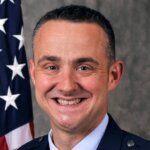 Joshua Logie
Joshua Logie
A: This effort starts with continuing to ensure all CCSD students have access to basic technology needs like computers and internet. A positive byproduct of COVID was that the district invested a lot of money in ensuring the 1:1 computer:student ratio and still has excess computers to endure in the short-term. Internet access will continue to required community engagement. Underserved communities are at highest risk for falling behind in access to technology-rich education and engagement. Thus, deliberate effort must be made to include these communities.
Additionally, as CCSD strives to overcome staff shortages, there must be focus on ensuring existing staff are able to thrive with available technology to maximize student learning experiences. Often times staff are provided with new technology and not properly trained on how to utilize it in a way that boost student success. As a board member I would ensure the superintendent is engaged in oversight of this problem and is providing updates to the board which directly show how expenditures on technology are driving improved student outcomes.
 Carlo Meguerian
Carlo Meguerian
A: The best way to get anyone ready for the future is to give them hands on experience, we need to get technology into our schools and spend the money in the correct ways. We also need to work with these companies to get products donated to the schools and also encourage the companies to give internships to our students, all this can be done with outreach and partnering with businesses.
Washoe County School District – District D
 Ron P. Dreher
Ron P. Dreher
A: Technology is so prevalent in today’s world that it goes unnoticed. While most students are computer literate they are not computer science literate. As stated in Jaci McCune’s Nevada Department of Education (NDOE) article K-12 Computer Science – 2023 CS Curriculum & Instructional Materials Review, “Computer Science is more than just computer programming. It is computational thinking, logical reasoning, critical thinking, and problem solving. These are tools our students need to be successful in the digital world they are now living and the future that is to come.”
To ensure students are prepared to compete in tomorrow’s technology-rich economy we have to “prepare students to innovate and create the new technologies that drive local and national economies.” Computer science is the future for our K-12 and higher education students. Providing computer science classes that prepare “students to innovate and create the new technologies that drive local and national economies” is essential. The statistics in Ms. McCune’s NDOE article indicate that Nevada has much ground to gain in educating our K-12 students to have what she describes as “computational thinking”. We have to enable our students to “think logical, to think critical and to problem solve.” Most students today have the digital computer literacy knowledge but do not have the “computer science” knowledge to tackle the technological required skills.
Here are her statistics as provided by the Code.org‘s State Advocacy Team included in her article:
Computer Science in Nevada
• Nevada currently has 3,890 open computing jobs (3.2 times the average demand rate in Nevada)
• The average salary for a computing occupation in NV is $83,542, which is significantly higher than the average salary in the state ($45,040).
• Nevada had only 199 computer science graduates in 2018. In Nevada, only 77% of all public high schools teach computer science (19-20 data).
• Only 1,996 exams were taken in AP Computer Science by high school students in Nevada in 2020 (353 took AP CS A and 1,643 took AP CSP).
• Only 37% were female (19% for AP CS A and 40% for AP CSP); only 552 exams were taken by Hispanic/Latino students (80 took AP CS A and 472 took AP CSP); only 78 exams were taken by Black students (12 took AP CS A and 66 took AP CSP); only 15 exams were taken by Native American/ Alaskan students (2 took AP CS A and 13 took AP CSP); only 14 exams were taken by Native Hawaiian/ Pacific Islander students (2 took AP CS A and 12 took AP CSP).
• Only 76 schools in NV (66% of NV schools with AP programs) offered an AP Computer Science course in 2019-2020 (28% offered AP CS A and 62% offered AP) which is 14 more than the previous year. There are fewer AP exams taken in computer science than in any other STEM subject area.
• Teacher preparation programs in Nevada did not graduate a single new teacher prepared to teach computer science in 2018.
I would encourage our educators, parents and public to support the “Nevada Digital Learning Collaborative as outlined by Ms. McCune.
(Source: Jaci McCune – Education Programs Professional, Jacqueline.mccune@doe.nv.gov. ) Telephone 775-687-5937
Washoe County School District – District G

Diane Nicolet
A: As an incumbent for WCSD School Board Trustee, I will continue to work with fellow Trustees & district staff to research trends in developing industries in order to design & implement a variety of career pathways for students. Embedded in all careers is the utilization of technology. Teachers, programs & curriculum content must include a variety of hands-on experiences for students as well as teachers. Partnering with industry experts to train teachers in the current use of technology as well as a “look-see” into the future of technological advancement is paramount in preparing our students for their future. Ensuring that students are prepared to compete must include an Individualized Education Approach (IEA) to identify a student’s strengths & gaps. Integral in the IEA is the inclusion of parents. Parents are a child’s first & forever teacher. Working together with the student, parents & educators scaffolds a students pathway to success. Nevada’s Future of Learning-Portrait of A Learner provides a roadmap that includes the student, parents, teachers & communities. I will continue to participate in the work of refining, defining & implementing the work of- Nevada’s Future of Learning-Portrait of A Leaner Project. Assurances only happen when people who care, are knowledgeable, willing to participate & follow through come together for a greater good – in this case – STUDENTS-Our Future & Theirs.
